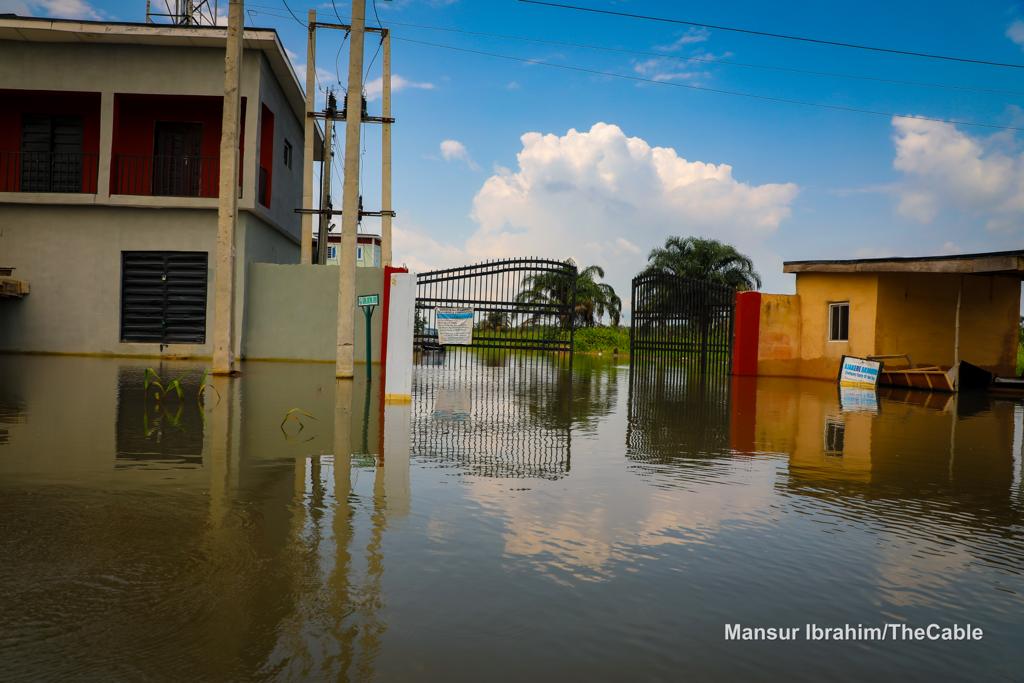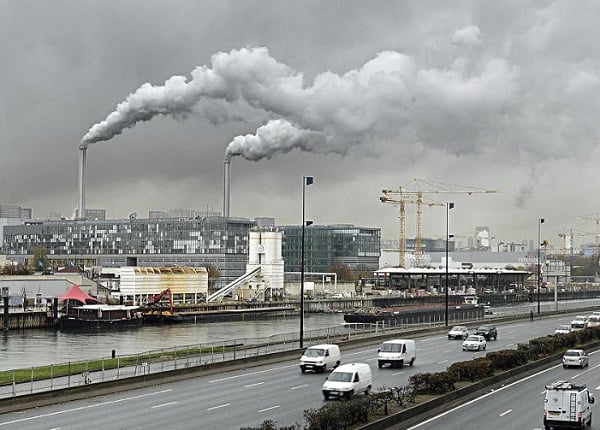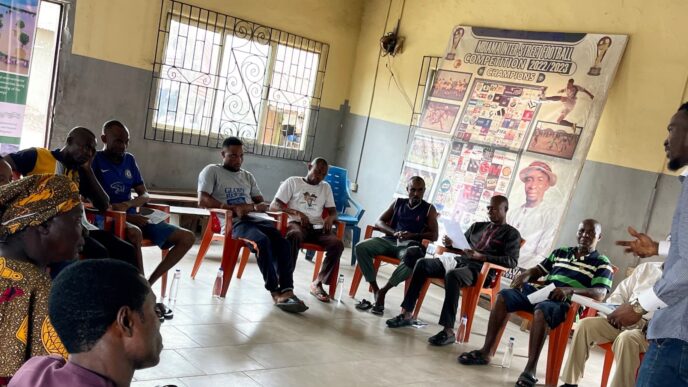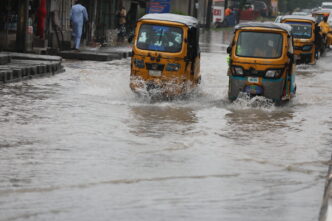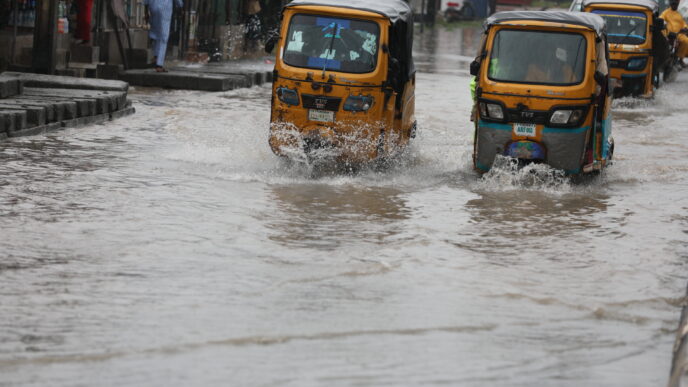File photo of flooding in Lagos and Ogun in 2023
The Nigerian Meteorological Agency (NiMet) says the nation witnessed extreme weather events such as flooding, windstorms, soil erosion, and dust haze in 2023.
In its 2023 state of climate report, NiMet listed Adamawa, Yobe, Lagos, Plateau, Taraba, Anambra, Delta, Ogun, and Katsina among the states that experienced flooding.
It said more than 157,159 persons were affected by flooding last year, with 68,000 displaced.
The agency said flooding contaminated water points in several communities across the country, causing water-borne diseases like cholera, diarrhoea, malaria, and dengue fever.
Advertisement
According to NiMet, windstorms indicated the start of the rainy season in the north-east. It said windstorms struck in Yobe, Bauchi, Borno, and Delta states.
NiMet said the windstorms impacted 73 households in Yobe state, while 890 people from 125 households were affected in Bauchi.
The agency said several communities in Anambra, Bauchi, and Yobe states were affected by climate-induced soil erosion in 2023.
Advertisement
“In 2023, Nigeria witnessed much milder flooding than in 2022. The National Emergency Management Agency (NEMA) reported that as of October 2023, 157,159 people were affected nationwide, with 68,000 displaced due to flooding,” the report reads.
“In Adamawa state, heavy rainfall coupled with the release of water from Cameroon’s Lagdo Dam triggered the flooding that submerged some villages along the banks of the Benue River.
“Flood swept through several communities in the Jos north LGA of Plateau state on September 16 and 17, 2023. The affected areas include Anguwan Rogo, Rikkos, Bauchi Road, and Naraguta, destroying at least 150 houses.
“From May 14 to 28, strong windstorms affected Bama, Dikwa, Pulka, and Maiduguri. At least six people were killed by windstorm in Delta state, south-south Nigeria.
Advertisement
“Events of dust haze were reported in January, February, March, April and May in the first and second quarter of 2023.
“Other events were in the last quarter of the year in October, November and December.”
Add a comment
